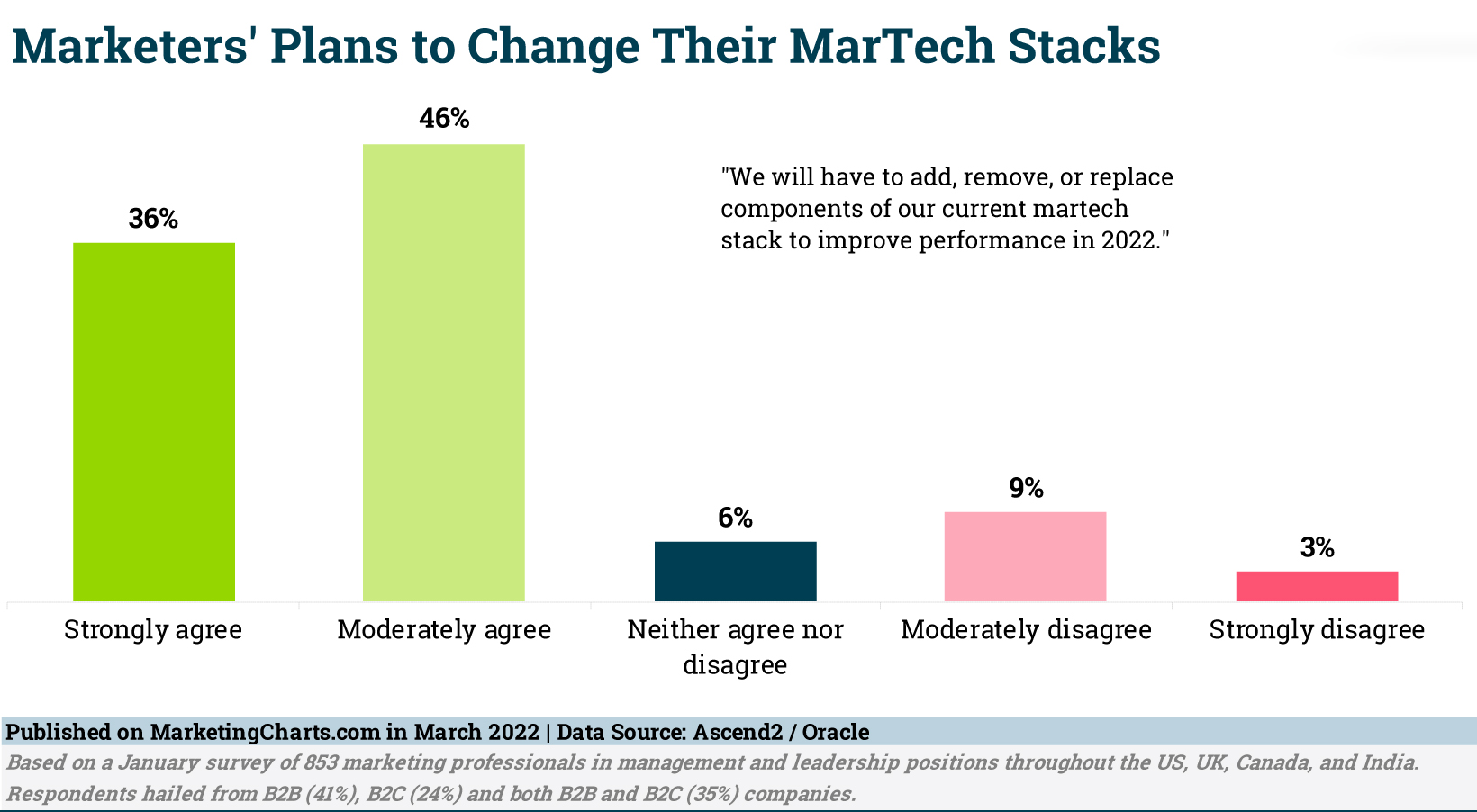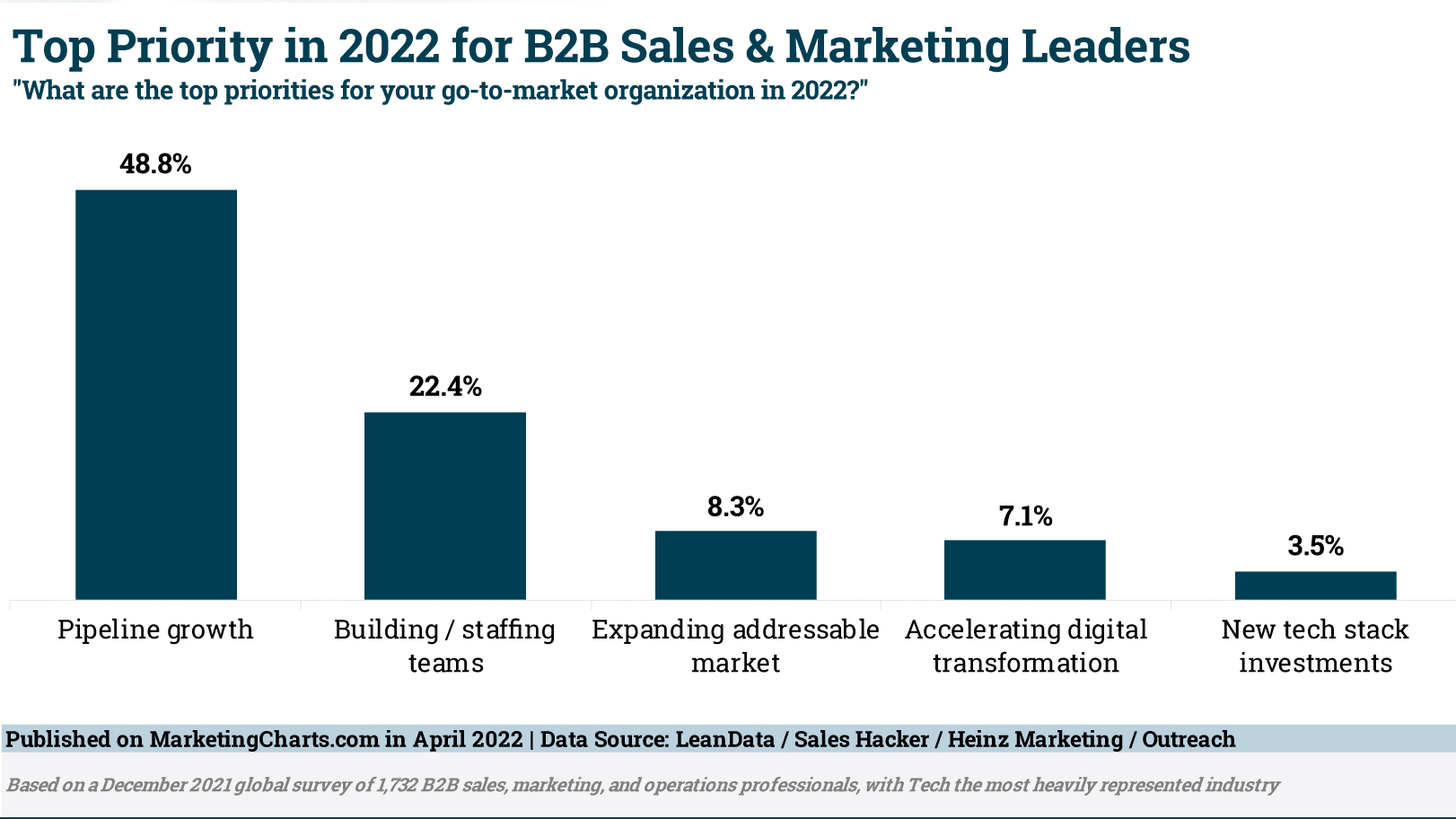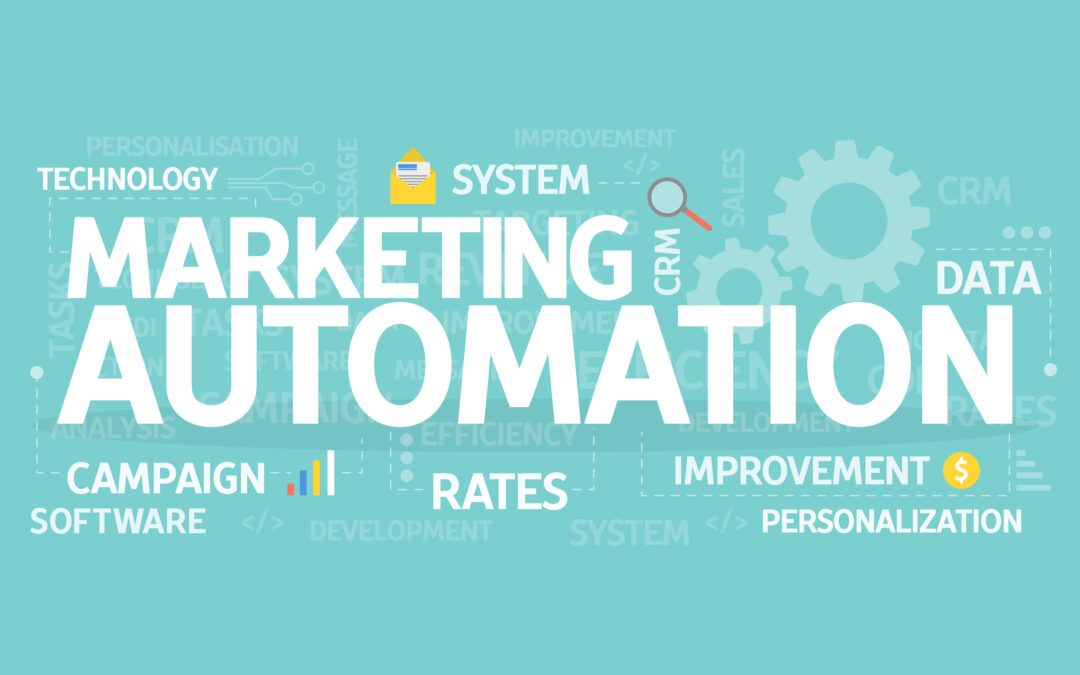
by bersondev | Jun 7, 2022 | Marketing, marketing automation, marketing technology
Marketing automation empowers marketers to focus on the strategic initiatives rather than get bogged down with the tactical implementation, and it aligns sales and marketing towards accomplishing common goals. This all adds up to decreased costs and increased revenue.
Marketing Automation Features
Campaign and Email Management
Create and track highly targeted marketing campaigns. Manage end-to-end email campaigns, including database management, target list creation and segmentation, email personalization, and SPAM-compliant auto unsubscribe capabilities.
Website Search Engine Optimization
Connect with your customers early in the buying cycle with search engine-friendly pages.
Landing Page and Forms
Create dynamic landing pages and forms. Build reusable templates to create a consistent look and feel. Instantly create leads in your CRM system for immediate sales follow-up on all form submissions.
Lead Reporting and Analytics
Get comprehensive insight into your marketing programs by program type, lead source, and promotions — in real-time. Seamlessly track lead-to-revenue to measure the ROI of your lead generation programs.
“91% of the most successful users agree that marketing automation is ‘very important’ to the overall success of their marketing across channels.” —Ascend2
Marketing Automation Benefits
Effective Multi-Channel Campaign Management
Streamlines the execution of complex marketing campaigns across multiple channels, including websites, email, events, and social media with a centralized marketing platform.
Improves Sales Collaboration
Aligns marketing and sales goals to improve collaboration and convert leads into customers.
Shortens Your Sales Cycle
Delivers highly relevant dynamic content to prospects at the right time, right place and right channel, guiding them through the buying cycle.
Quantifies and Prioritizes Leads
Captures, identifies, scores and nurtures leads based on profile, behavior, interests, and conversion readiness to deliver sales-ready leads.
Real-Time Visibility
Provides insight into campaign performance and return on investment (ROI) with robust analytics.
To learn how to best use Marketing Automation to increase ROI, check out this article.
As a recognized Marketing Automation leader for the past decade, we work with firms to help them utilize their marketing technology to increase revenue. To see how we can help you, schedule a free consultation or email Lori Berson at lberson@BersonDeanStevens.com.
BersonDeanStevens has been a recognized brand strategy and marketing leader for over 25 years, including over a decade in Marketing Automation. We work in partnership with you to differentiate your brand and achieve your business goals. Client list.
![Marketers’ MarTech Stack Plans [Report]](https://bersondeanstevens.com/wp-content/uploads/2022/06/Martech-Tools-1080x675.jpeg)
by Lori Berson | Jun 4, 2022 | Marketing, marketing technology
According to an
Ascend2 report produced in partnership with Oracle, more than 8 in 10 marketers agree that they will have to add, remove, or replace components of their current marketing technology (martech) stack to improve performance this year.

Marketers continue to adjust their martech stacks in the hopes of getting better results, with 7 in 10 CMOs saying that they invested in a martech solution last year in order to improve their digital marketing performance.
Improving performance is the top-cited challenge by marketers, who also said that key marketing challenges include the ability to change/adapt to circumstances as they arise, and delivering an exceptional customer experience. Only 1 in 8 said that a poorly integrated martech stack is a challenge, with this at the bottom of the list of challenges.
Customer Data Platforms (CDPs) – Top Investment This Year
Recent research has suggested that more than half of marketers have adopted a customer data platform (CDP) in the past 18 months, and this survey likewise finds that these solutions are high on the priority list for marketers.
When asked which marketing solutions they plan to invest in the most this year, the B2B and B2C marketers surveyed pointed to CDPs (37%) first, followed by segmentation and targeting solutions (32%), email marketing platforms (32%), and testing and optimization solutions (30%).
Additionally, respondents were quick to point to CDPs as indispensable to their martech stacks. Some 36% cited them as a marketing solution they absolutely cannot live without, on par with email marketing platforms, and ahead of content management systems (32%), marketing automation platforms (28%), and testing and optimization solutions (25%).
The report points out that a CDP will help B2C marketers “make their social media efforts more effective and targeted,” as experimentation with new social platforms is a key marketing tactic that B2C respondents reported that they will add this year. On the list of new marketing tactics for B2C companies, this was second only to personalized content and offers.
B2B marketers also placed personalized content and offers at the top of their list of marketing tactics to add this year, with customer loyalty programs second (fourth on the list for B2C marketers). A sizable share will add video marketing efforts, with the report noting that B2B marketers are more apt than their B2C counterparts to make video editing software an investment priority this year.
Other Findings:
- Almost two-thirds of respondents (64%) said their marketing budgets are increasing from last year, versus one-quarter who said they’re decreasing.
- 88% either strongly (42%) or moderately (46%) agree that they will have access to the appropriate data to make critical marketing decisions, an almost identical result to previous Ascend2 research in which 84% responded either “yes” (29%) or “somewhat” (55%) when asked if they had enough data to make effective decisions on where to spend marketing and/or sales resources.
- If they could integrate data from another business application into their martech stack, the one that would have the most impact on their success would be customer service, followed by customer loyalty, according to B2B marketers. For B2C marketers customer loyalty edged out customer service.
- Customer purchase history is the first-party data source that will be most valuable to the broadest set of respondents in addressing the loss of third-party cookies.
- Trust in artificial intelligence (AI) is highest for targeting ads and personalizing content and offers in real-time, and lowest for writing subject lines and copy.
About the Data: The results are based on a January survey of 853 marketing professionals in management and leadership positions throughout the US, UK, Canada, and India. Respondents hailed from B2B (41%), B2C (24%) and both B2B and B2C (35%) companies.
Need help with your martech stack? Schedule a call or email Lori Berson at lberson@BersonDeanStevens.com.
BersonDeanStevens has been a recognized brand strategy and marketing leader for over 25 years, including over a decade in marketing and sales automation. We work in partnership with you to differentiate your brand and achieve your business goals. Client list.
![B2B Marketers Go-To-Market Top Priorities [Survey]](https://bersondeanstevens.com/wp-content/uploads/2022/05/b2b_marketing-priorities.jpg)
by Lori Berson | May 9, 2022 | Lead Management, Marketing, marketing automation, Marketing Strategy
According to the recent The State of B2B lead Management 2022 report from LeanData, Sales Hacker, Heinze Marketing and Outreach, B2B marketing and sales leaders found it more challenging to generate sufficient pipeline last year than to pivot go-to-market approaches amid changing conditions or sell virtually with a remote team. Per the study, those same leaders will be focused on generating pipeline this year.

Not only was pipeline the top challenge for 2021, but it’s the leading priority (among 5 listed) for 2022, according to the survey’s more than 1,700 respondents. Almost half (48.8%) named pipeline growth their top priority for their go-to-market organization this year. That’s more than double the share who said that building/staffing teams (22.4%) is their top priority. Other initiatives such as expanding their addressable market (18.3%), accelerating digital transformation (7.1%), and new tech stack investments (3.5%) were lower on the priority list.
The attention paid to pipeline growth, at least for marketing respondents, is understandable given the extent to which marketing is expected to contribute to the sales pipeline. In a recent study, 82% of marketers said they are measured by the sales pipeline they initiate, and 78% reported being measured by the sales pipeline they influence. The good news is that almost 6 in 10 respondents agree to some extent that their sales and marketing are aligned to deliver growth this year.
Although a slight majority agree that their organization’s lead management systems and processes help them deliver an ideal customer experience, more than one-quarter don’t feel that way. Moreover, one-quarter disagree that their current lead management system will support revenue goals this year. And, although almost 2 in 3 feel that they are somewhat effective in achieving their conversion goals with their current lead management strategy, only around 1 in 4 (27%) are very confident in this area.
Lead Routing Issues
The survey indicates that B2B organizations are at times assigning leads to the wrong owner, with 6 in 10 admitting this sometimes happens and another 7% claiming that it happens half or more of the time.
2 in 3 are able to match leads to accounts and are happy with the process. Unfortunately, this leaves many for whom lead matching occurs but is slow or error-ridden (24.3%), and a small fraction who simply aren’t matching leads to accounts despite a desire to do so (4.3%).
Issues with speed may be the result of outdated processes: the #1 method for routing leads is manual, as opposed to other methods such as using marketing automation platforms or native assignment rules in the CRM.
Looking forward, the top lead management capability that respondents would like to have but currently don’t is more automation and fewer manual processes.
About the Data: The results are based on a December 2021 global survey of 1,732 B2B sales, marketing, and operations professionals, with technology the most heavily represented industry.
Need assistance with your go-to-marketing strategies, and sales and marketing automation? Schedule a call or email Lori Berson at lberson@BersonDeanStevens.com.
BersonDeanStevens has been a recognized brand strategy and marketing leader for over 25 years, including over a decade in marketing and sales automation. We work in partnership with you to differentiate your brand and achieve your business goals. Client list.

by bersondev | Mar 5, 2022 | marketing automation, marketing technology
The proliferation of digital channels and devices has made it challenging for marketers to accurately target prospects with the right messages, on the right devices, at the right times. Prospects are managing more of the buying process themselves, creating decision shortlists by researching brand websites and social channels without ever speaking to a sales rep. As such, to be effective, marketers must be creative, targeted and aligned with sales goals, and they must also have greater visibility into buyer attributes and behaviors.
Faced with these challenging market dynamics and increasing ROI (Return on Investment) pressure, marketers at companies of all sizes are turning to Marketing Automation as a solution to:
Increase marketing efficiency.
Marketing Automation enables marketers to automate the time-consuming manual tasks around content creation, management, and personalization, campaign scheduling and execution, data hygiene (i.e. fix duplicate or inconsistent data in separate silos), communication with sales, and lead nurturing. Marketing Automation saves time and improves productivity.
“Best in class marketers are 67% more likely to use a Marketing Automation platform and see 14% overall growth in marketing revenue.” – Aberdeen
Enhance the ability to generate more and better-qualified leads.
With Marketing Automation, marketers combine multiple criteria including demographic, firmographic (firm demographics) and behavioral data (pages visited, downloads, completed forms) with a lead-scoring system to generate and identify sales-qualified leads.
A multichannel view of prospect behavior.
Marketing Automation platforms integrate multiple channels to create more comprehensive prospect profiles and more holistic views of prospect behavior.
Better alignment of sales and marketing goals.
Marketing Automation software helps to align sales and marketing efforts ensuring sales reps are working with sales-ready leads. Working cooperatively to set scoring parameters and define qualified leads, sales and marketing become one team. Marketing works on building relationships with early-stage leads to enable the sales team to focus their efforts on the most highly qualified prospects.
Improve lead conversion and ROI.
According to Forrester Research, B2B marketers who implement Marketing Automation experience a 10 percent increase in their sales pipeline contribution.
To learn how to best use Marketing Automation to increase ROI, check out this article.
As a recognized Marketing Automation leader for the past decade, we work with firms to help them utilize their marketing technology to increase revenue. To see how we can help you, schedule a free consultation or email Lori Berson at lberson@BersonDeanStevens.com.
BersonDeanStevens has been a recognized brand strategy and marketing leader for over 25 years, including over a decade in Marketing Automation. We work in partnership with you to differentiate your brand and achieve your business goals. Client list.

by bersondev | Mar 1, 2022 | Lead Generation, Marketing, marketing automation, marketing technology
Marketing automation success requires more than just software. It takes strategy, creative, and the right team. Whether you are new to marketing automation or have a platform in place, here are sample questions and a worksheet for organizations that have marketing bottlenecks.
Lead Scoring Questionnaire
- Which channels contribute to your current customer acquisitions?
- What content contributes to your current customer acquisitions?
- What are the general steps your current customers took to become customers?
- Based on the earlier assessment of your marketing processes, how would you change your lead scoring model to improve these processes?
Lead Scoring Worksheets
To ensure you provide your Sales team with right leads at the right time, Marketing and Sales should develop the lead scoring model together.
To start, audit your sales-ready prospects and customers who have recently closed to learn their activities and behaviors. (Example: did 70% of your customers come from one lead campaign or lead magnet? Did they schedule a call with your sales team?)
As you clarify the type of leads that Sales prefers, you’ll be able to assign points to lead characteristics like attributes, activity, and engagement. Like campaigns, lead scoring is not a set it and forget it effort. After the initial set up, you’ll need to continue to evaluate your model and adjust it accordingly. Remember, Sales always prefers better qualified leads versus a higher quantity of leads.
PROFILE SCORE
This category helps you determine which contacts are a good fit for your Sales team. The Profile Score rules apply only once. (Example: when your contact enters a specific list based on their form submission, their score will be assigned.)
Make sure each contact has the attributes you’re looking for: job title, company size, industry. You can set up the rules to add points for attributes you prefer and subtract points for attributes that don’t work for your business.
BEHAVIOR SCORE
The Behavior Score shows you the contact’s activity. You’ll be able to identify implicit activity by your contact. (Example: the contact browses certain web pages.)
Depending on your scoring model, Sales might want to reach out to a contact based on their behavior. (Example: if a contact visits a pricing page on your website.) Behavior Scores are applied for every action taken so they can be applied multiple times.
ENGAGEMENT SCORE
This Score helps you identify explicit actions taken by your contacts and are potentially more valuable than implicit actions. A highly-engaged contact is expressing interest in your content. (Example: a form submit, clicking a link in an email.) Engagement Scores apply every time an action takes place.
All three categories: Profile, Behavior, and Engagement Scores give you an understanding of how well a contact fits your ideal customer profile, how active they are on your website, and how engaged they are with your content and business. You can have automated alerts sent to your Sales reps to reach out to contacts based upon your scoring rules.
Aligning customer marketing and Marketing Automation strategies can be challenging and time consuming. The right Marketing Automation platform and experienced external resource will streamline and simplify the process, ensuring that your Marketing Automation strategy is on-point, on-budget, implemented properly, and optimized for success.
To learn how to best use Marketing Automation to increase ROI, check out this article.
As a recognized Marketing Automation leader for the past decade, we work with firms to help them utilize their marketing technology to increase revenue. To see how we can help you, schedule a free consultation or email Lori Berson at lberson@BersonDeanStevens.com.
BersonDeanStevens has been a recognized brand strategy and marketing leader for over 25 years, including over a decade in Marketing Automation. We work in partnership with you to differentiate your brand and achieve your business goals. Client list.

by bersondev | Feb 27, 2022 | Lead Generation, Marketing, marketing automation, marketing technology
Marketing automation success requires more than just software. It takes strategy, creative, and the right team. Whether you are new to marketing automation or have a platform in place, here are sample questions and a worksheet for organizations that have marketing bottlenecks.
Sales and Marketing Questionnaire
- Is the ideal customer the same for Sales and Marketing? If not, what’s different?
- How effective is the hand-off of leads from Marketing to Sales? Are the requirements clearly defined?
- Would your Sales team agree on Marketing’s assessment of the effectiveness? Why (not)? Would Management agree with Marketing’s assessment?
- Are there any other departments (Support, Operations) you’d like to involve in this implementation? What would you need to ask them?
Aligning customer marketing and Marketing Automation strategies can be challenging and time consuming. The right Marketing Automation platform and experienced external resource will streamline and simplify the process, ensuring that your Marketing Automation strategy is on-point, on-budget, implemented properly and optimized for success. Check back for Part 5.
To learn how to best use Marketing Automation to increase ROI, check out this article.
As a recognized Marketing Automation leader for the past decade, we work with firms to help them utilize their marketing technology to increase revenue. To see how we can help you, schedule a free consultation or email Lori Berson at lberson@BersonDeanStevens.com.
BersonDeanStevens has been a recognized brand strategy and marketing leader for over 25 years, including over a decade in Marketing Automation. We work in partnership with you to differentiate your brand and achieve your business goals. Client list.

![Marketers’ MarTech Stack Plans [Report]](https://bersondeanstevens.com/wp-content/uploads/2022/06/Martech-Tools-1080x675.jpeg)

![B2B Marketers Go-To-Market Top Priorities [Survey]](https://bersondeanstevens.com/wp-content/uploads/2022/05/b2b_marketing-priorities.jpg)

